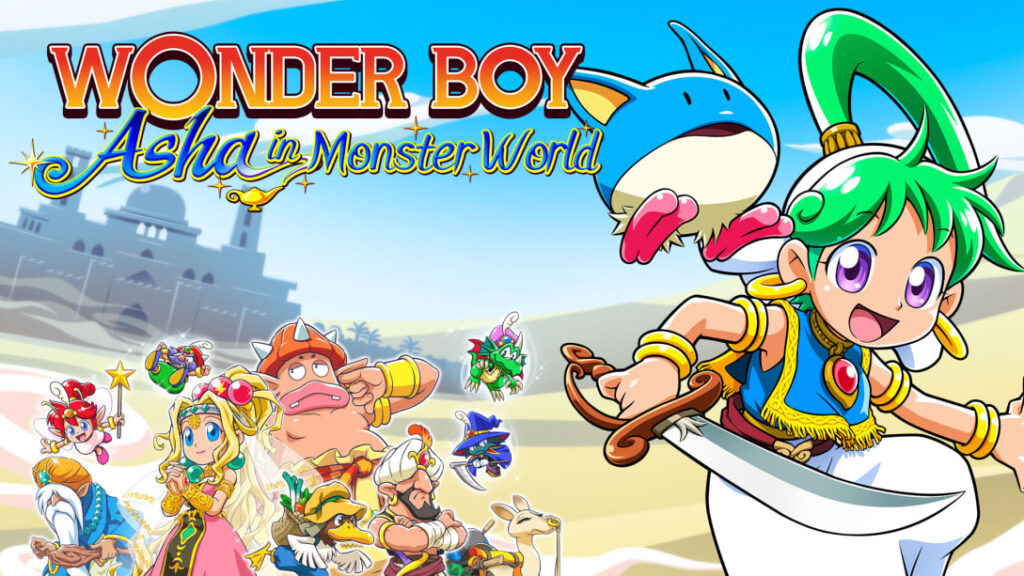
Monster World IV was a very influential game for Wayforward. Some may say there might not have been a Shantae game if it were’t for this refreshing entry in the Wonder Boy franchise. For something so crucial to one of the more popular indie game developers today, it is shocking that Monster World IV never made it to the US till over a decade later.
Monster World IV was instantly enjoyed by gamers who played it. There was a lot to like; platforming is tight, the visuals are appealing for a 16-bit game, and the chipper music helped immerse players into the inviting and vibrant setting. The effort given to the protagonist’s expressive animation certainly helped.
Asha was especially endearing. In the 90s, having a cute girl as your protagonist was uncommon, and Monster World IV made it easy to fall in love with her. Now that it is a cult classic, it has been remade and rebranded as Wonder Boy: Asha in Monster World, completely dropping the number designation. Just how well does Asha’s game transition to the modern age? The results can be a little mixed…
Wonder Boy: Asha in Monster World
Developer: Artdink
Publisher: ININ Games
Platforms: Windows PC, Nintendo Switch (reviewed), PlayStation 4
Release Date: May 28th, 2021
Players: 1
Price: $39.99 USD
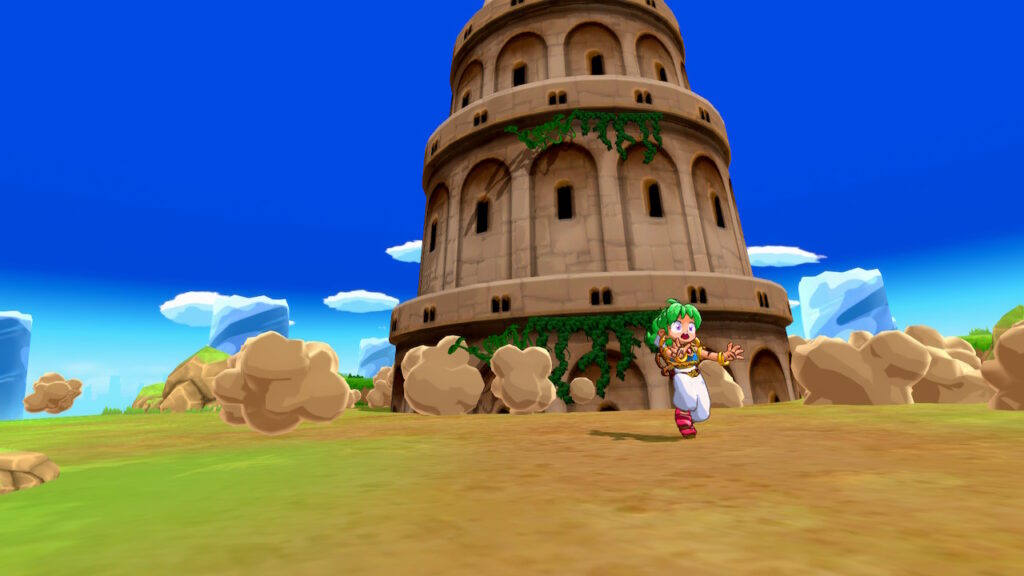
At its core, Wonder Boy: Asha in Monster World is a standard action platformer. Despite its influence on the metroidvania Shantae series, Asha’s adventure is a very straightforward and linear game. There is a main town that she will often return to between dungeons, and she can upgrade some gear and increase her max heart capacity, but it is all done in a single path.
Wonder Boy: Asha in Monster World is very faithful to Monster World IV as far as remakes go. Levels have the same layout, and have bosses appear at the same locations. This makes the remake very authentic to its source material, and the only additions made to this update are minor flourishes and quality of life improvements.
Asha no longer has to find a sage if she wishes to save progress; she can save anywhere outside of boss arena, and can load exactly where she stood.
This is welcomed because Asha in Monster World abides by old school game design, where there was less care given to pacing and logical structure of dungeons. Some stages can feel like they go on forever, and repeat the same gimmick many times over to pad out the game.
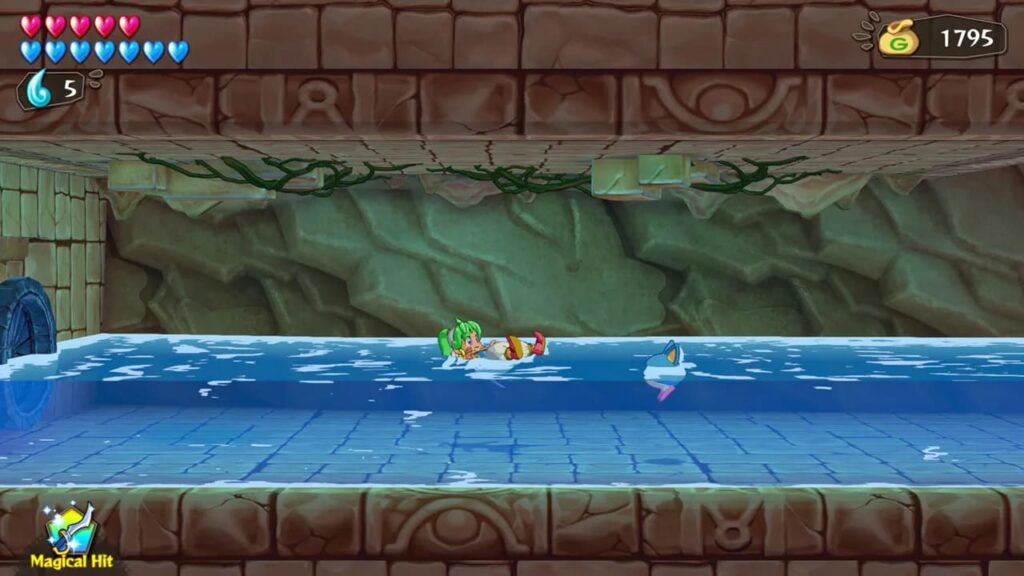
Asha’s actions are few but versatile. She can swing her sword with a half of a second of cool-down, which forces players to not be greedy when spamming attacks at enemies. It can be easy to be left exposed between swings, and since heart restores are rarely dropped, it is best to play defensively.
The real challenge is knowing where to stand when using her shield. If an enemy attack is too big or extends past Asha’s character model she will take a nasty hit, and potentially a second hit from the bounce back and fall into a pit. It wouldn’t be a retro experience without cruel and cheap bounce back damage, and Asha in Monster World delivers.
Boss battles have epic scale, and the foes are padded out with high HP. Defeating them is more about figuring out their pattern, finding the the right place to be to block attacks, and whether to hit foes with a downward pogo attack or an aerial upwards thrust. Asha is not Shovel Knight or Scrooge McDuck- she won’t be able to eternally bounce on big guys with her sword, no matter how good you get at it.

There is no skill ceiling in Asha in Monster World. It is best to take things slow when getting into scrapes with large ogres, since it can be easy to run out of health from getting smacked around as if Asha owes them money. Landing a hit and quickly making distance or getting the shield up is how most fights with bigger enemies play out.
The other module of Asha in Monster World is the platforming and exploration. There are a lot of adventure game elements, like having to find key-items and use them in some manner to open some gate. Other times, Asha will use her blue Pepelogoo to hit distant switch and have to negotiate a platforming gauntlet.
Pepelogoo is a major aspect of Asha’s playability. This blue, Pokemon-like creature can be grabbed and used as a glider, which can then be used to follow up with a double jump. Asha is able to clear huge gaps with this little guy, and make short work of most platform sequences thanks to him.
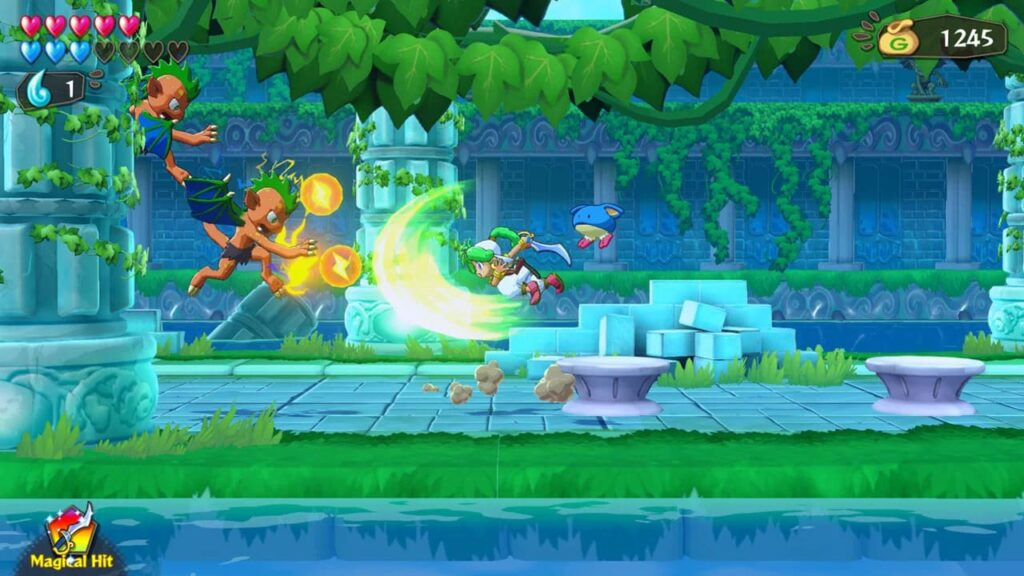
The only downside to Pepelogoo is that he has to be called into Asha’s hands. This initiates a short animation of the little guy having to travel towards her, and this has to be done after every double jump.
The developers failed to realize how this would disrupt the flow of fast paced running and jumping; so after clearing any major gaps, players will be mashing the call button and frantically trying to get closer to Pepelogoo. Gliding and the double jump should have been automatic actions to keep the gameplay fluid.
It is possible to adjust to this, but you still have to get Pepelogoo and Asha connected just right as they dash through platforms while avoiding fire balls and spikes caterpillars. No matter what, it still makes for an uncomfortable stop-and-go play style that feels like whiplash.
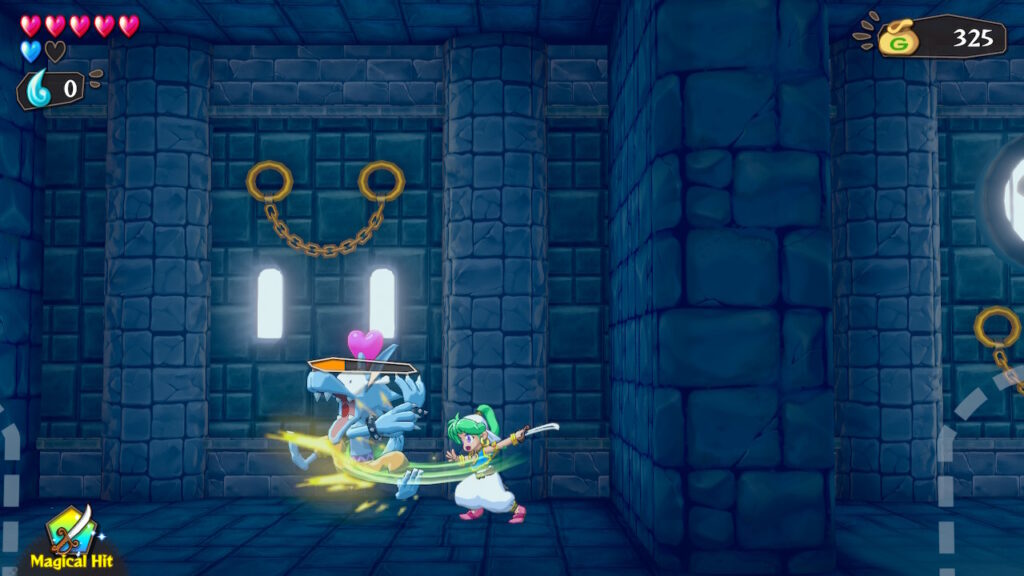
The original Monster World IV was an impressive looking 16-bit game. It had large and colorful sprites with expressive animation; a cut above most of its contemporaries. Asha in Monster World won’t be impressing anyone with its obviously low-budget visuals and animation.
The character models are faithful, and their poses and silhouettes are accurate to the originals. However, the remake’s animations are stiff, and a lot of the motions lack enough frames to make them look natural. Asha’s walking animation does not even match the speed in which she moves across the floor, making the end result look cheap and rough.
Certain action have no interpolation, and characters end up snapping into positions when changing directions. This might have been due to trying to emulate the frames from the original 16-bit game.
This worked with the 2D sprites because they were abstracted enough that imaginations could fill in the gaps. With detailed 3D visuals of Asha in Monster World, the animators really needed to flesh out the animation further.
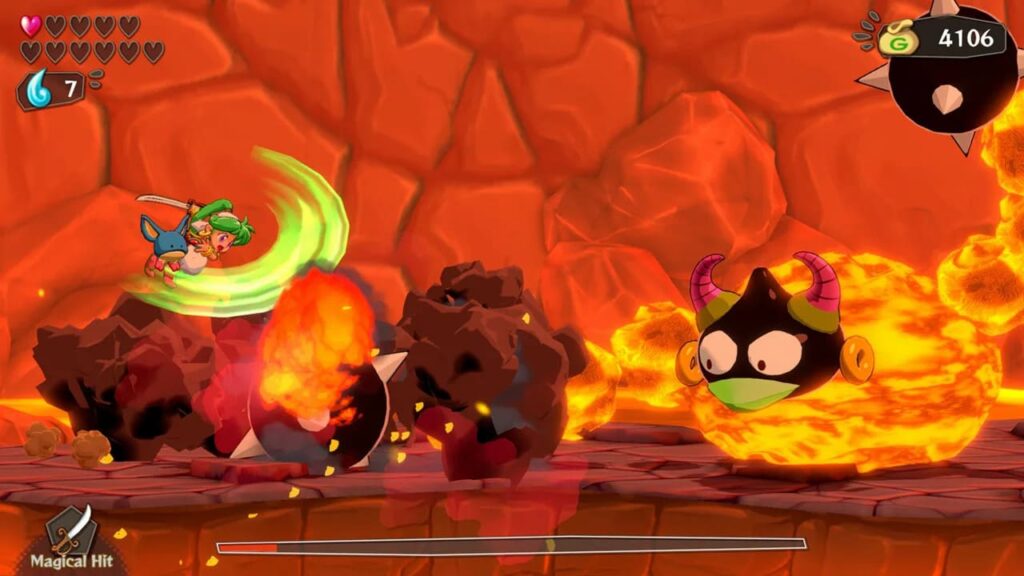
The character animation may be a bit on the low budget side, but the effort at realizing the characters in 3D is commendable. The style from the 90s is preserved beautifully in these high definition models and textures. It is way brighter than anything that was possible in the 90s, which had a softer pastel vibrancy.
The third dimension maximizes the level layouts from the original game. Asha is able to move in and out of the backgrounds and foregrounds; a feature that was used and under utilized in Shantae games. Asha in Monster World makes the world feel so much more real by having paths that can be explored, leading to extra areas that are in plain sight.
This seemed like it was a feature that the developers envisioned way back in the 90s, but couldn’t figure out how to make it work in 2D. It is like this is how it was always meant to be, and Asha in Monster World beautifully executes it.
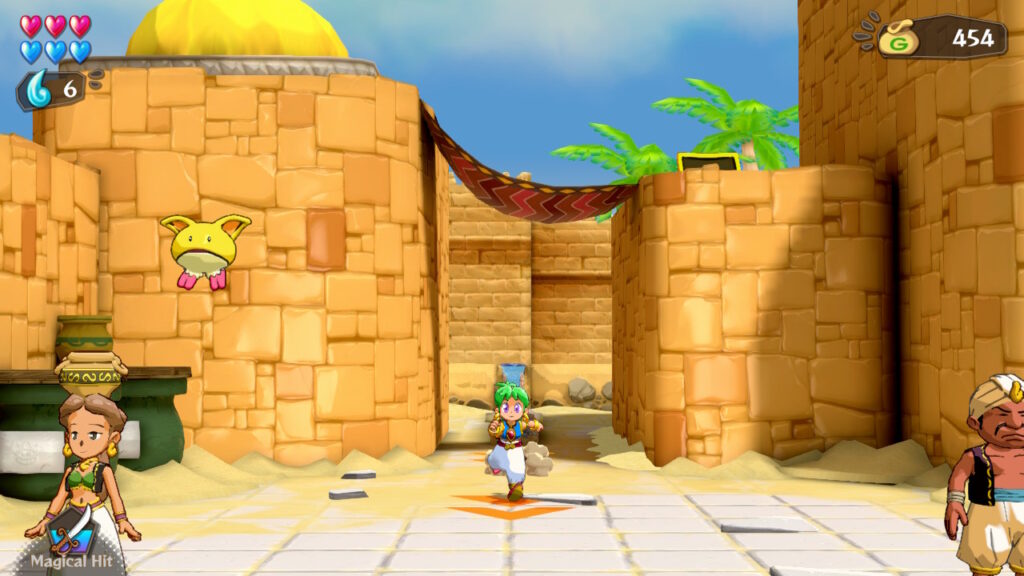
Innovations that Asha in Monster World has over its progenitor is that it’s now possible to replay completed areas. This was a huge problem in Monster World IV, since the game was rotten with missable collectibles, and a lot of the time there would be only one poorly aimed jump that would mean missing out on a blue stone for a complete run.
This remake now has totals that show what has been missed and in what areas. This is such a simple addition that greatly improves the experience. Monster World IV may not have been a metroidvania or a real action RPG, but this one addition finally makes Asha in Monster World almost qualify.
The only feature missing is a map screen. The dungeons can get very large and can go on for a while. Compounded with several mini-bosses, and having to retry areas to find missing collectibles or gold, being able to track where to go and what comes next would have been very helpful.
The story is about as complex as one would expect from a action platformer from the 90s. Asha gets a job as a warrior, and sets out to save the four elemental spirits that have been seal by a quartet of evil wizards. The motivations of the evil wizards and their reasoning for opening a portal to the monster world is barely brought up or explained.
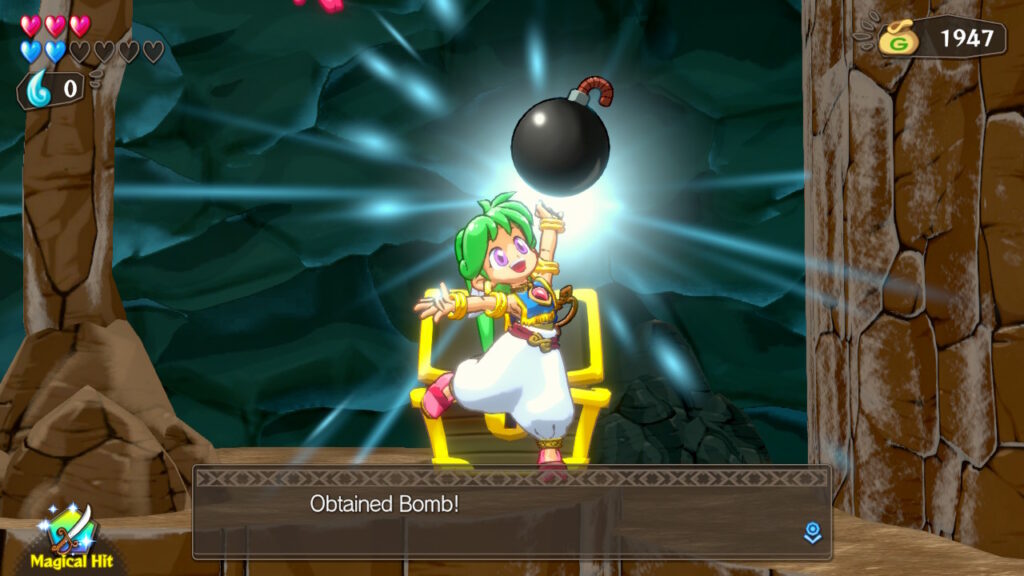
What is unexpected is the effort put into background elements that tie Asha in Monster World to the other Wonder Boy games. There are hints of a bigger lore than what Asha gets involved with, but it’s barely explored. These bits of flavor do ultimately make the world feel a bit richer, and it is appreciated that the developers cared to put this in.
Anyone interested in Asha in Monster World and buys a physical copy on Switch will automatically have Monster World IV on the cart. Unfortunately, buying this from the eShop or on PSN means missing out on the 16-bit classic. Why this is included with only the physical version only defies reason, and should have been a bonus unlockable feature for beating the game.
The music has also been redone and sounds as lively and catchy as ever. Fans of the Shantae games will instantly hear the influences where Wayforward directed Jake Kaufman.
There is also many instances of voice clips added for punctuating some scenes. All voices are very obviously Japanese performers, and a majority of them sound like they are from the same woman. The actress has range, but it is hard to ignore that it might have been a cost cutting measure.
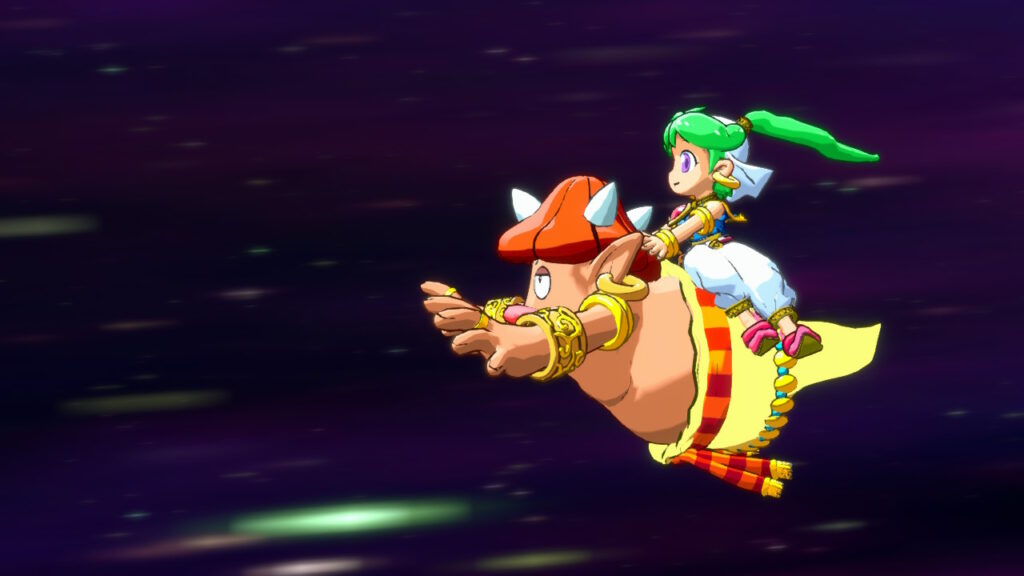
Asha in Monster World is a remake of an imperfect platformer that had a lot of charm. Thankfully, the charm has been faithfully maintained, and it’s a smoother experience due to the refinements of some of the systems. Awkwardly placed platforms and cheaply placed threats were painstakingly recreated in order to adhere to authenticity.
Wonder Boy: Asha in Monster World is a decent remake of Monster World IV. It won’t replace it, since it doesn’t do everything better, but it does enough to improve on the foundation. The new features added make for a more enjoyable experience, but the developers could have gone further to make Asha’s adventure more than the sum of its parts.
Wonder Boy: Asha in Monster World was reviewed on Nintendo Switch using a review code provided by ININ Games. You can find additional information about Niche Gamer’s review/ethics policy here.